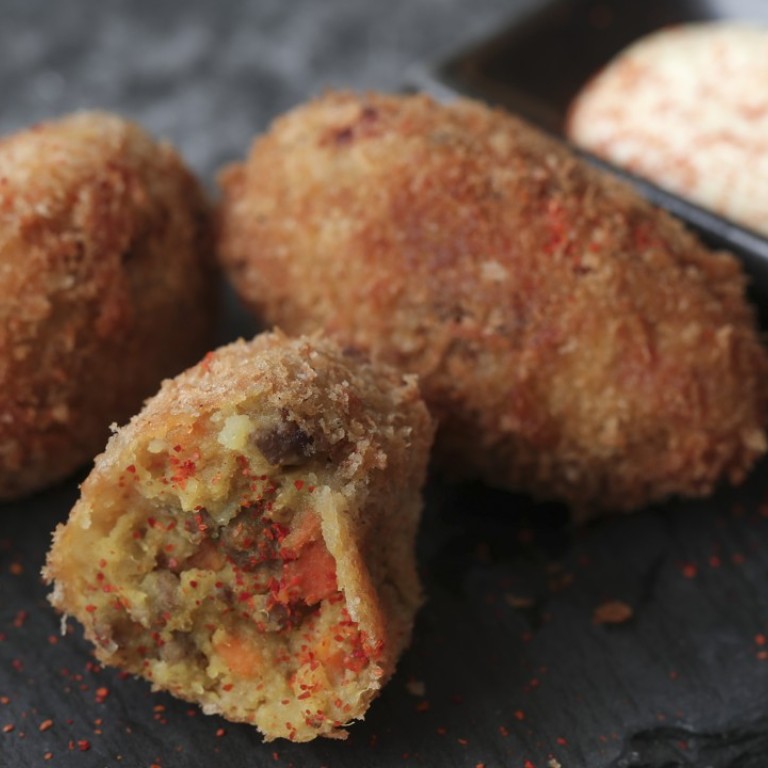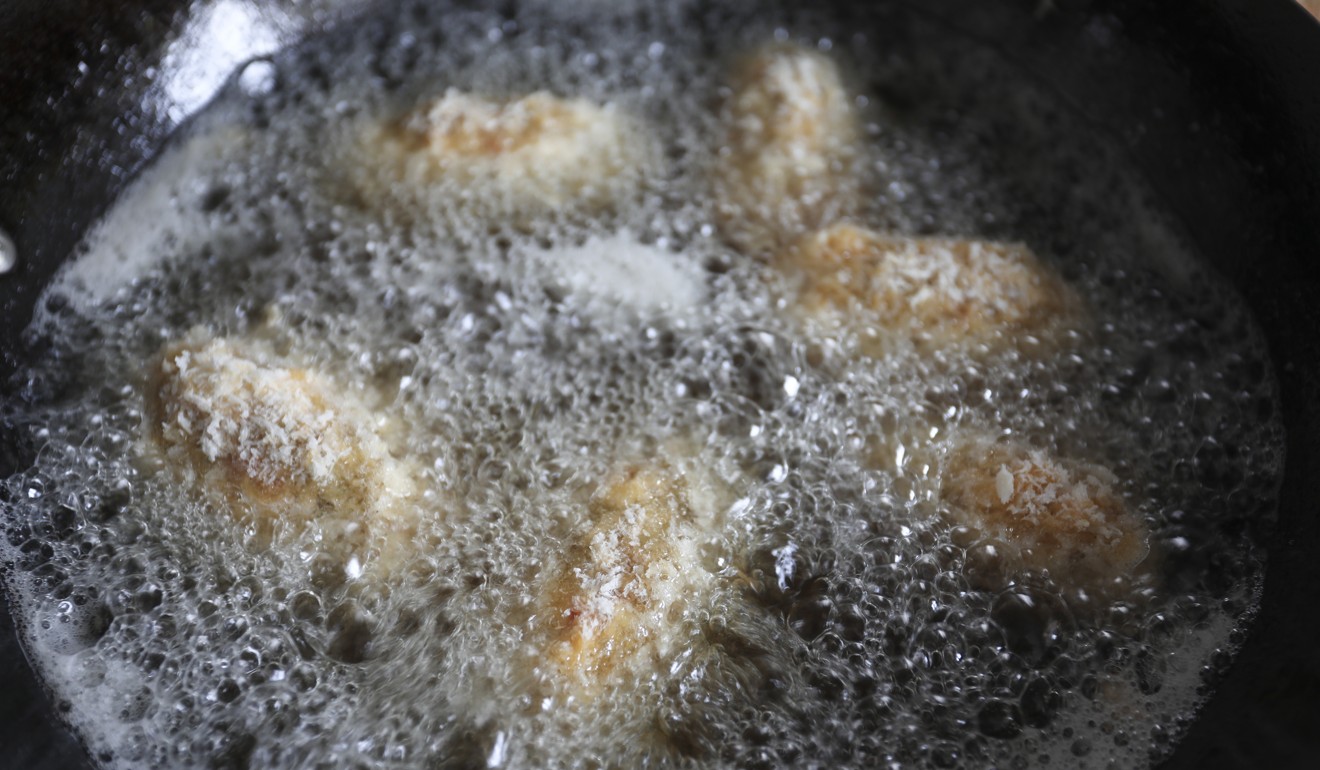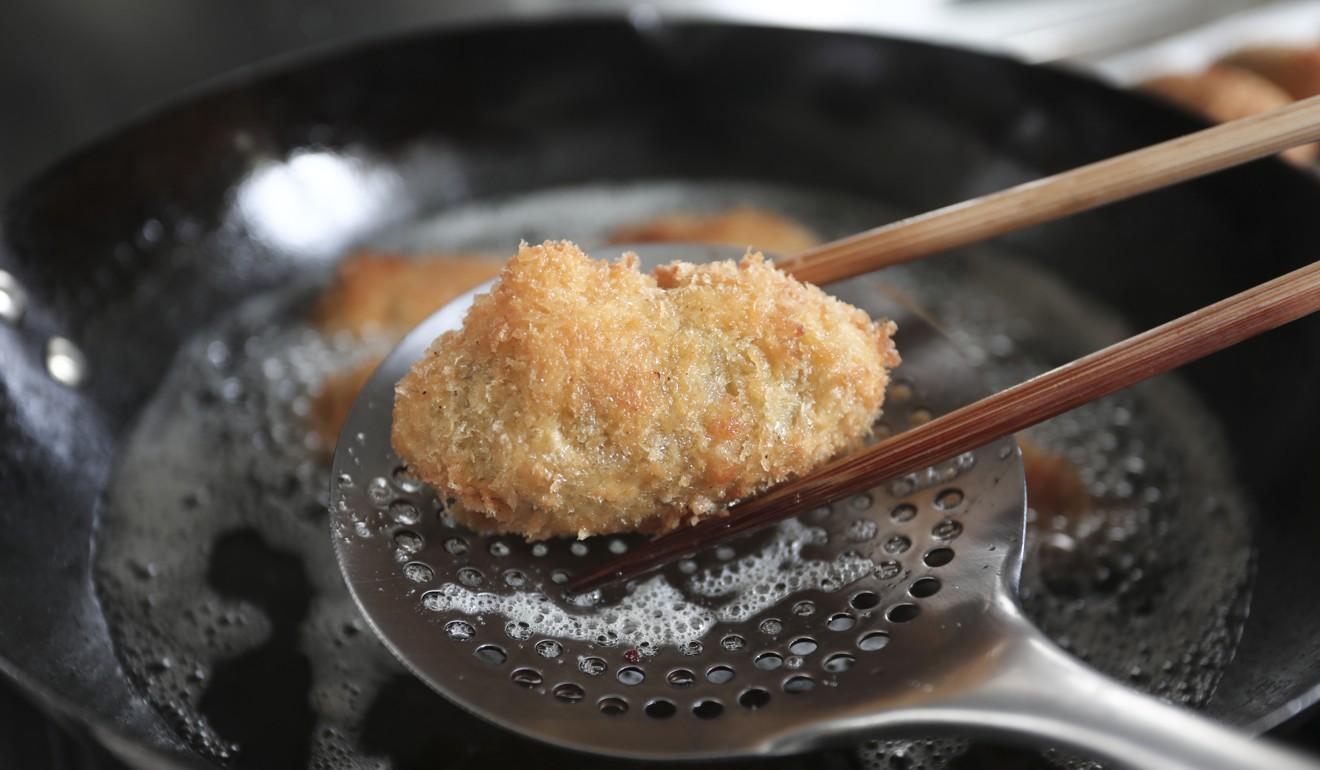
How to make croquettes – comfort food with fun fillings, from Japanese-style to cheesy béchamel
Versatile and satisfying, this recipe can be adapted according to what you have available in the fridge
Croquettes have almost universal appeal, because who doesn’t like starchy fried things? (If you don’t, then skip this week’s column.) The filling can be adapted, which means these recipes are great for using up scraps of (still good) meat, seafood and vegetables in the fridge – just use common sense when combining the ingredients.
Curried korokke (Japanese-style potato croquettes, pictured)
If you’re feeding children (or others with sensitive palates) decrease (or even skip) the curry powder; if you’re a vegetarian, omit the beef and add more vegetables (blanched peas and/or corn kernels are good). The fried croquettes reheat beautifully in the oven whether they were refrigerated or frozen.
600 grams baking potatoes
100 grams onion
100 grams carrot
200 grams minced beef
1 ½ tsp curry powder, or to taste
1 ½ tsp granulated sugar
Fine sea salt and freshly ground black pepper
Plain (all-purpose) flour
2 large eggs
Panko
Cooking oil, as needed
Kewpie mayonnaise
Shichimi togarashi
Scrub the potatoes then put them unpeeled in a saucepan and add cool water to cover by about 2cm. Place the pan over a high flame and bring to the boil. Lower the heat, partially cover the pan with the lid and simmer the potatoes until just tender but not mushy. Drain the potatoes and, when they are still warm but cool enough to handle, strip off and discard the skin. Mash the potatoes until smooth, then set them aside to cool.
Finely dice the onion and carrot. Heat about 15ml of oil in a skillet and when it’s hot, add the onion and carrot and cook over a low flame until the carrot is tender. Turn the heat to high, add the beef and about half a teaspoon of salt, the curry powder and sugar. Cook, stirring often, just until the beef loses its pink colour. Cool to room temperature. Add the beef and vegetable mixture to the potatoes, sprinkle in one teaspoon of salt and some black pepper and mix well. Refrigerate for at least one hour, or until well chilled.

Taste the croquette mixture and mix in more curry powder and/or, salt if needed. Form the mixture into 16 to 18 evenly sized shapes (I like ovoids but you can make them into cylinders or thick discs).
Put some flour into a shallow bowl, the eggs (whisked) into a second bowl, and panko into a third. Lightly coat the croquettes with flour, then dip them in the egg and finally into the panko, pressing gently so the breadcrumbs adhere.
Pour cooking oil to the depth of about 4cm into a pan and heat over a medium flame to 170 degrees Celsius. Fry the croquettes several at a time in the oil, turning them over as needed so they brown evenly. Adjust the flame as needed so the oil doesn’t get too hot (which would brown the croquettes before the interior is hot). Fry them in batches; do not crowd the pan. When the croquettes are browned and hot, drain them on paper towels.
Serve the croquettes with Kewpie mayonnaise dusted lightly with shichimi togarashi.

Cheese and béchamel croquettes
Unlike potato croquettes, the type made from a béchamel sauce need to be eaten piping hot, or else they lose the appeal of molten, oozy interior contrasting with the crisp exterior. These croquettes aren’t difficult to make but you do need plenty of time for the béchamel to chill sufficiently; if the béchamel is too soft when you fry it, the filling will ooze out of the crust as you fry them. I like to make the béchamel the day before and chill it overnight.
As with the potato croquettes, you can add or substitute other ingredients. Add finely diced jamon (or another type of air-cured ham) and/or chopped vegetables (cooked or not, depending on their hardness), or use another type of grated hard cheese.
40 grams unsalted butter
40 grams plain (all-purpose) flour, plus
extra for coating the croquettes
400ml whole milk
150 grams aged comte or gruyere,
finely grated
A pinch of freshly grated nutmeg
Fine sea salt and freshly ground black pepper
Plain (all-purpose) flour
2 eggs
Panko
Cooking oil, for frying
Heat the milk until it’s very hot, either in the microwave or in a pan on the stove.
Melt the butter in a saucepan placed over a low flame. Add the flour and stir well to make a thick, smooth paste. Stir constantly for about two minutes. In small additions – about 60ml at a time – start adding the milk, using a whisk to smooth out the lumps. Continue to add the milk, making sure to whisk until smooth before stirring in more. When all the milk has been added, whisk constantly until the mixture comes to a simmer.
Turn off the heat and add about half a teaspoon of salt (the cheese is salty), freshly ground black pepper, a pinch of nutmeg and the cheese. (If you’re using any additional ingredients, stir them in now.) Scrape the béchamel into a very lightly oiled metal pan and spread it so the mixture is about 2cm thick. Place a sheet of cling film directly on the surface of the béchamel then let it come to room temperature before refrigerating for several hours.
Use spoons to shape the chilled béchamel mixture into ovoids that are about 4cm long (they can be a little larger, but smaller ones are more elegant). Try to avoid mixing the béchamel too much (which would soften it). Place the ovoids on a tray lined with baking paper and chill them for at least an hour.
Put some flour into a shallow bowl, the eggs (whisked) into a second bowl, and some panko into a third. Lightly coat the ovoids with flour, then dip them in the egg and finally into the panko, pressing gently so the breadcrumbs adhere.
Pour cooking oil to the depth of about 4cm into a pan and heat over a medium flame to 170 degrees Celsius. Fry the croquettes several at a time in the oil, turning them over as needed so they brown evenly. Adjust the flame as needed so the oil doesn’t get too hot (which would brown the croquettes before the interior is hot). Cook them in batches; do not crowd the pan. When the croquettes are browned and hot, drain them on paper towels. Serve immediately.

